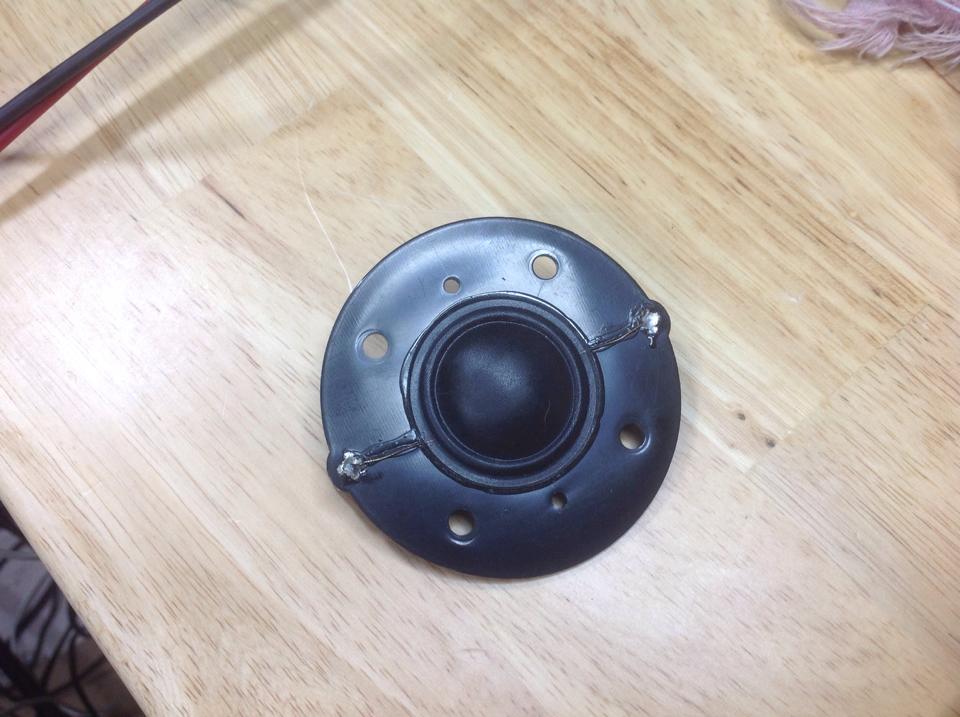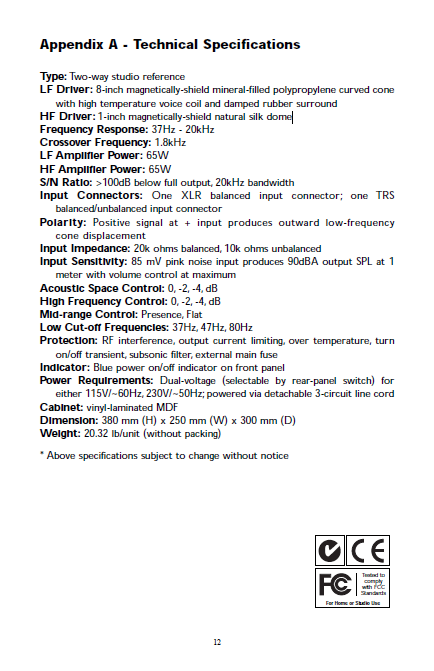I have a pair of M-Audio Studiophile BX8 monitors (NOT BX8a) that the Tweeters don't work no more. I talk to the parts service of M-Audio and they don't have that part availeble anymore. They send me a list of there oficial service centers to see if by any chance you still got that part in your stock but they dont. So now I have to find a replacement for it. The magnetic bobin (sorry if this isn't the term) is of 1 inch. Any idea what tweeter will work good on them? Thanks.

Comments
Here is more info on the and a picture if it helps you guys reco
Here is more info on the and a picture if it helps you guys recommend me a replacement.



Probably easier to just replace both tweeters with new high qual
Probably easier to just replace both tweeters with new high quality shielded 1" silk dome tweeters from someplace like Parts Express or elsewhere.
https://www.parts-express.com/cat/tweeters/17
Need to figure out the actual impedance (probably either 4 or 8 ohm), so measure one of those if you can. The other specs to look for are power handling (65W) and of course the mounting dimensions. Maybe you can get more info and the full specs on those tweeters from tech support, seeing as they no longer have any...
By the looks of that one in the pic it wasn't especially high end, so buying two new replacements will probably be an improvement. What did you do or what caused them to blow? You might want to investigate that first before throwing more money at them...
Go through the specs and match up the features (shielded, 1"silk dome etc) and spend as much as you are comfortable with...you can spend $100 a piece on a tweeter but then that might be a little overkill with those boxes..
Take care when measuring tweeter impedance - you can't do it dir
Take care when measuring tweeter impedance - you can't do it directly with the average multimeter. One way of doing it is to generate a sinewave tone (start at around 5KHz for a tweeter), send it through a power amp into the tweeter with a small wirewound resistor in series. The resistor needs to be less than 1/10 of the expected tweeter impedance, so something like 0.47 Ohm would be suitable. Use the multimeter to measure the a.c. volts separately across the tweeter and across the resistor. You have to measure right across the terminals of each device, as wiring and connection resistances can be significant. You take the ratio of volts across each of the two devices and multiply it by the actual ohmic value of the series resistor to get the effective tweeter impedance at that frequency. Repeat it at other frequencies within the published range of the tweeter. Don't drive the sinewaves to more than about 20% of the rated tweeter power handling - it will be painful anyway.
In your pic I was going to ask what happened to the back?....it
In your pic I was going to ask what happened to the back?....it looks like you disassembled that one?...OR was that the result of the damage?!?!
Boswell's method is the most accurate method if you don't have a proper impedance meter.
Maybe there's some impedance markings on the back...usually there is.
Putting an ohm meter directly on the speaker leads will only give you a close range of DC ohms and you can see if it's closer to 4 ohms or 8 ohms. Using Boswell's method will of course give you a more accurate value though.